The post How To Deal With Food Cravings On Your Weight Loss Plan appeared first on Akron Weight Loss Programs.
]]>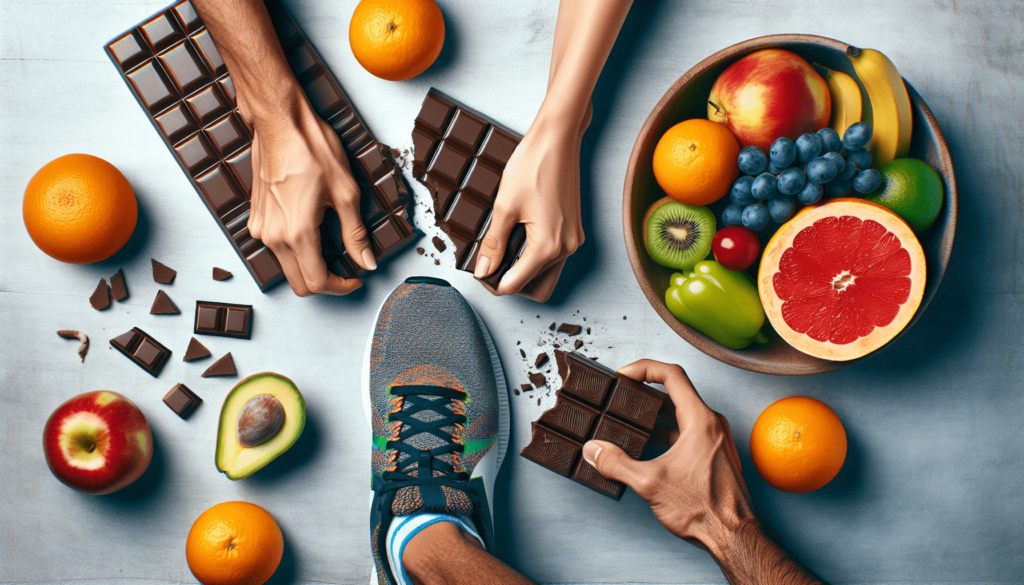
Understanding Food Cravings
What Are Food Cravings?
Food cravings are intense desires for specific foods, stronger than normal hunger. You might find yourself yearning for something sweet, salty, or fatty, and these cravings can often feel overwhelming.
Why Do Food Cravings Happen?
Several factors contribute to food cravings:
- Psychological Factors: Stress, anxiety, and depression can lead to emotional eating. Your brain seeks comfort foods to release feel-good chemicals like serotonin.
- Hormonal Imbalances: Hormones like ghrelin (which stimulates hunger) and leptin (which signals satiety) play a significant role in cravings.
- Nutrient Deficiencies: Sometimes, cravings can indicate a deficiency in certain nutrients. For example, a craving for chocolate may signal a magnesium deficiency.
- Environmental Triggers: The sight and smell of food can trigger cravings, even if you’re not hungry. Think about passing by a bakery and suddenly wanting a donut.
- Habitual Behavior: Over time, your body can become accustomed to sugary and fatty foods, making it habitual to crave these types of foods.
The Science Behind Cravings
Let’s delve a bit deeper into the biological perspective. When we consume certain foods, especially those high in sugar and fat, our brain releases dopamine, the neurotransmitter associated with pleasure and reward. This creates a cycle where you seek out these foods to experience that “high” again. Understanding this can help you see why cravings can be so powerful but also why they aren’t unbeatable.
Strategies to Manage Food Cravings
Identify Triggers
The first step in managing food cravings is identifying what triggers them. Keep a cravings journal for a week, noting down:
- Time of day
- Situation or environment
- Emotional state
By recognizing patterns, you can take proactive steps to change your routine or environment to minimize these triggers.
Emotional Eating vs. Physical Hunger
Understanding the difference between emotional eating and physical hunger is crucial. Emotional eating often comes on suddenly and feels urgent, whereas physical hunger builds gradually and is more patient. Next time you feel a craving, take a moment to assess if you’re truly hungry or if there’s an emotional trigger behind it.
Mindful Eating
Practicing mindful eating can drastically reduce cravings. This involves paying full attention to the eating experience:
- Eat Slowly: Taking your time with meals allows your body to recognize when you’re full.
- Savor the Flavors: Focus on the taste, texture, and aroma of your food.
- Be Present: Avoid distractions like TV or smartphones while eating.
Create a Balanced Diet
Eating a balanced diet that includes all macronutrients—carbohydrates, proteins, and fats—can help stabilize your blood sugar levels and reduce cravings. Here’s a quick guide:
| Macronutrient | Function | Sources |
|---|---|---|
| Carbohydrates | Provide energy | Whole grains, fruits, vegetables |
| Proteins | Build and repair tissues | Lean meats, beans, nuts, dairy |
| Fats | Support cell function | Avocados, olive oil, nuts, seeds |
Healthy Snacking
When cravings hit, having healthy snack options can make a big difference. Stock your pantry with:
- Fruit and Nut Mix: Provides a mix of natural sugars and healthy fats/proteins.
- Greek Yogurt: High in protein and can be sweetened with a bit of honey.
- Veggies and Hummus: Crunchy and satisfying without being high-calorie.
Hydration
Sometimes, your body can mistake thirst for hunger. Make sure you’re staying hydrated throughout the day by drinking plenty of water. Adding a slice of lemon, lime, or cucumber can make it more enjoyable.
Incorporate Physical Activity
Regular exercise can help manage food cravings in several ways:
- Improves Mood: Physical activity releases endorphins, which can reduce the desire for comfort foods.
- Burns Calories: Helps you stay within your calorie budget, even if you occasionally give in to cravings.
- Distracts You: A vigorous workout can take your mind off food.
Get Enough Sleep
Sleep is often overlooked, but it plays a crucial role in managing cravings. Lack of sleep can disrupt hormone levels that regulate appetite, making you more likely to crave high-calorie foods. Aim for 7-9 hours of quality sleep each night.
Stress Management Techniques
Since stress can trigger food cravings, it’s essential to have effective stress management techniques. Here are a few:
- Meditation: Helps calm the mind and improve focus.
- Deep Breathing Exercises: Can be performed anywhere, anytime to reduce stress.
- Journaling: Writing down your thoughts can provide emotional clarity and reduce stress.
Overcome Food Cravings Effectively
Practical Tips to Stay on Track
Plan Your Meals
Preparing your meals ahead of time can help you stay committed to your eating plan. Knowing what you’ll eat reduces the temptation to grab something unhealthy at the last moment. Here’s how to start:
- Weekly Planning: Set aside time each week to plan your meals.
- Shopping List: Create a list based on your meal plan to avoid impulse buys.
- Prep Ahead: Cook and store meals in advance so there’s always a healthy option ready.
Limit Access to Trigger Foods
If you know that having certain foods in the house leads to binge eating, it’s best to avoid buying them altogether. Instead, fill your kitchen with nourishing foods that support your goals.
Mindful Indulgence
It’s okay to indulge occasionally. The key is moderation. If you’re craving chocolate, opt for a small piece of dark chocolate. This way, you satisfy the craving without going overboard.
Use Smaller Plates
This might sound simplistic, but using smaller plates can help you control portions. A full smaller plate can be as satisfying to the eye and stomach as a large, half-empty one.
Find Healthy Substitutes
Cravings often have a specific texture or flavor. Find healthier substitutes to satisfy those urges. Here are some ideas:
| Craving | Healthy Substitute |
|---|---|
| Crisps/Chips | Air-popped popcorn, kale chips |
| Ice cream | Frozen yogurt, smoothie bowl |
| Soda | Sparkling water with a splash of juice |
Practice Self-Compassion
Being too hard on yourself when you give in to a craving can lead to a downward spiral of negative emotions and more eating. Practice self-compassion and remind yourself that it’s okay to have slip-ups; what matters is getting back on track.
Long-Term Maintenance
Reevaluate Your Goals
As you progress in your weight loss journey, it’s crucial to reassess your goals. Are they still realistic and healthy?
Celebrate Small Wins
Take time to celebrate your milestones. Small victories like resisting a craving or sticking to your meal plan for a week should be acknowledged.
Stay Connected
Support from friends, family, or a community can give you the motivation you need. Share your journey with others to stay accountable and supported.
Keep Learning
Nutrition and health are ever-evolving fields. Stay informed by reading reputable sources, attending workshops, or even consulting a dietitian or nutritionist.
Flexibility Is Key
Life is unpredictable, and so should be your approach to dieting. Flexibility can help you adapt to new situations without feeling like you’ve failed.
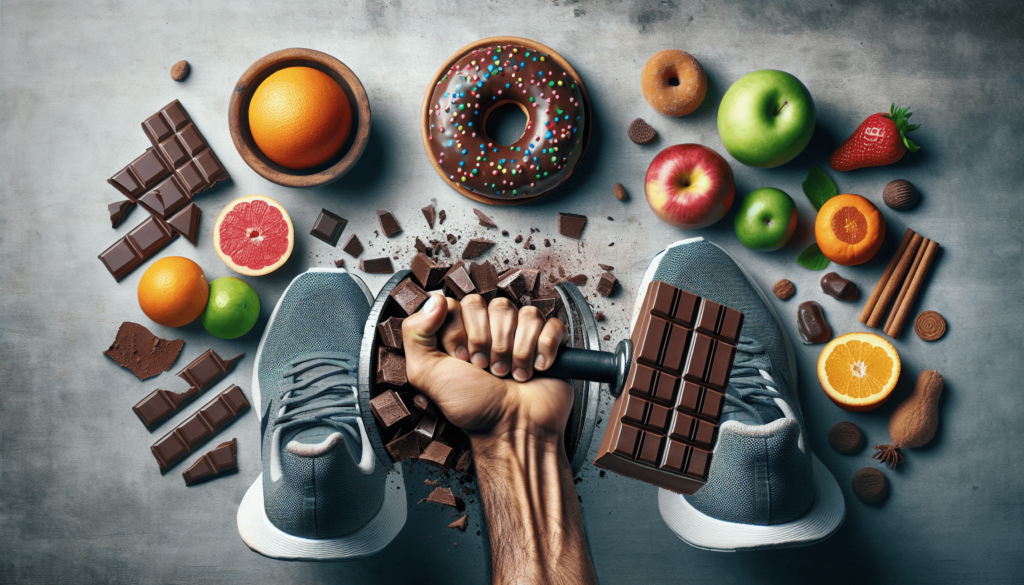
Conclusion
Food cravings are a natural part of life, and managing them on a weight loss plan doesn’t have to be daunting. By understanding the science behind cravings, identifying triggers, applying mindful eating practices, and incorporating practical strategies, you can effectively keep your cravings in check. Remember, it’s about balance and making sustainable choices that support your health and well-being. Here’s to your success on your weight loss journey!
The post How To Deal With Food Cravings On Your Weight Loss Plan appeared first on Akron Weight Loss Programs.
]]>The post How To Avoid Overeating At Meals appeared first on Akron Weight Loss Programs.
]]>In your journey towards weight loss, one challenge you might frequently encounter is the temptation to overeat at meals. This friendly guide will offer you some simple yet effective tips to help you recognize your body’s cues, create balanced portions, and develop mindful eating habits. By incorporating these strategies into your daily routine, you can enjoy your meals without the guilt and stay on track with your weight loss goals. Have you ever felt the uncomfortable sensation of being too full after a meal? You’re not alone. Many of us grapple with the challenges of controlling our portions and avoiding overeating, especially when faced with delicious food. But worry not! This guide is designed to provide you with practical tips and tricks to help you avoid overeating at meals, making your journey towards a healthier lifestyle much more manageable.
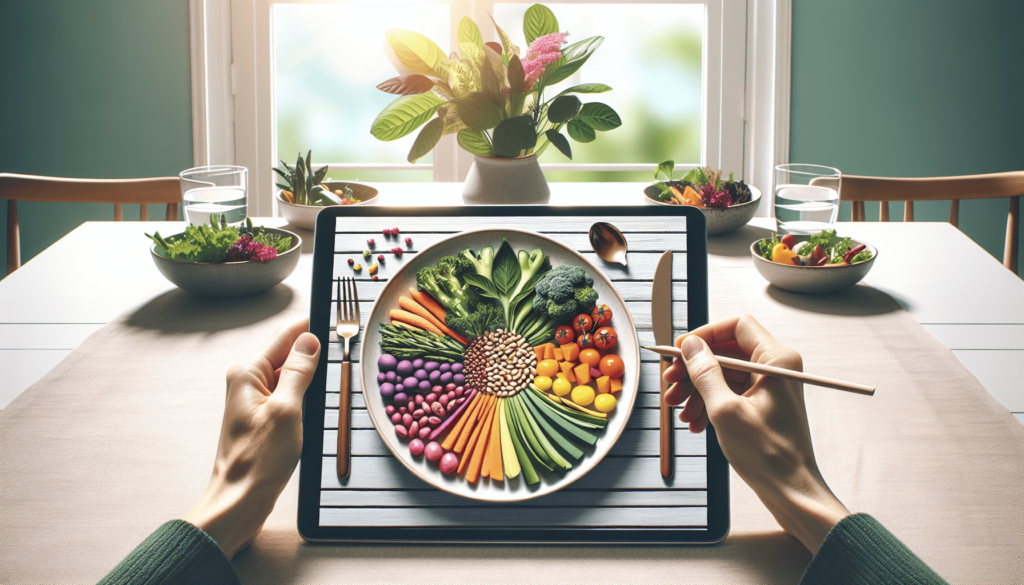
Understanding Overeating
Overeating occurs when you consume more food than your body needs, leading to discomfort and potential weight gain. To tackle this issue, it’s crucial to understand why we overeat. Several factors can contribute to overeating, including emotional triggers, environmental cues, and even social settings.
Emotional Triggers
Emotions can significantly impact our eating habits. Stress, sadness, boredom, and even happiness can drive us to eat more than necessary. It’s vital to recognize these triggers to develop healthier coping mechanisms.
Environmental Cues
Sometimes, the environment we’re in can encourage overeating. Think about all-you-can-eat buffets, large portion sizes at restaurants, or even the tempting snacks kept in your kitchen. By being aware of these cues, you can make more mindful decisions about what and how much to eat.
Social Settings
Ever noticed how you tend to eat more when dining with friends or at family gatherings? Social interactions can lead to mindless eating, where you’re engrossed in conversation and not paying attention to your food intake.
Tips to Avoid Overeating
Let’s dive into some effective strategies that can help you overcome the habit of overeating. These tips are straightforward and, with a little practice, can become a natural part of your daily routine.
1. Eat Mindfully
Mindful eating is about paying full attention to your meal without distractions. It involves savoring each bite, noticing the flavors and textures, and listening to your body’s hunger and fullness cues.
Steps to Eat Mindfully:
- Remove Distractions: Turn off the TV, put away your phone, and focus solely on your meal.
- Chew Slowly: Take the time to chew your food thoroughly. This not only aids digestion but also allows your brain to register that you’re full.
- Savor Each Bite: Enjoy the flavors, textures, and aromas of your food. This can make even a small meal feel more satisfying.
2. Portion Control
Controlling your portions is an effective way to prevent overeating. Start by serving yourself smaller portions and giving your body time to signal if it needs more food.
Tips for Portion Control:
- Use Smaller Plates: A smaller plate can make a serving of food appear larger, helping you eat less.
- Measure Your Food: Use measuring cups or a food scale to ensure you’re eating appropriate serving sizes.
- Avoid Family-Style Meals: Serve your meal on individual plates rather than placing all the food on the table where it’s easy to take additional servings.
3. Plan Your Meals
Planning your meals in advance can help you make healthier choices and avoid impulsive eating. When you have a plan, you’re less likely to grab something unhealthy in a moment of hunger.
Steps to Meal Planning:
- Create a Menu: Plan your meals for the week, including breakfast, lunch, dinner, and snacks.
- Grocery Shop with a List: Stick to your meal plan to avoid buying unnecessary items.
- Prep in Advance: Prepare ingredients or full meals ahead of time to make healthy eating more convenient.
4. Stay Hydrated
Water can help control your appetite. Sometimes, our bodies confuse thirst for hunger, leading to unnecessary eating. Aim to drink water throughout the day and before meals to help manage your hunger.
Hydration Tips:
- Carry a Water Bottle: Keep a reusable water bottle with you to make regular drinking a habit.
- Drink Before Meals: Have a glass of water before you start eating. This can help you feel fuller sooner.
- Infuse Your Water: If plain water is too boring, try infusing it with fruits or herbs for a tasty twist.
5. Manage Stress
Stress can lead to overeating, often known as “stress eating.” Finding healthy ways to manage stress can reduce your dependency on food for comfort.
Stress Management Techniques:
- Exercise: Regular physical activity can help reduce stress levels.
- Mindfulness and Meditation: Practicing mindfulness or meditation can help you stay calm and focused.
- Hobbies and Interests: Engage in activities that you enjoy and that relax you.
6. Get Enough Sleep
Lack of sleep can affect your hunger hormones, leading to increased appetite and cravings for unhealthy foods. Ensuring you get adequate rest is essential for maintaining a balanced diet.
Tips for Better Sleep:
- Establish a Routine: Go to bed and wake up at the same time every day.
- Create a Sleep-Friendly Environment: Keep your bedroom dark, quiet, and cool.
- Limit Screen Time: Avoid screens for at least an hour before bed.
Learn More About Avoiding Overeating
Practical Advice for Common Situations
Everyday situations can present unique challenges that make it harder to avoid overeating. Here’s some tailored advice for dealing with these common scenarios.
Dining Out
When dining out, the portions served are often larger than what we would typically eat at home. Here are some tips to keep your portions under control when eating at a restaurant.
Dining Out Tips:
- Order an Appetizer as an Entrée: Often, appetizers are smaller and can be a more appropriate portion size.
- Share a Meal: Splitting an entrée with a friend can help you enjoy your meal without overeating.
- Box Half of It: Ask for a to-go box as soon as your meal arrives and put half of your food away for later.
Social Events
Social gatherings often revolve around food, making it challenging to stick to your healthy eating habits. Here are some strategies to help you navigate these events.
Social Event Tips:
- Eat Before You Go: Have a small, healthy snack before heading out. This can help curb your appetite and reduce the temptation to overeat.
- Contribute a Healthy Dish: Bringing your own dish ensures there will be at least one healthy option available.
- Focus on Socializing: Engage more in conversations and activities rather than hovering around the food table.
Holidays and Special Occasions
Holidays and special occasions usually mean indulgence. It’s okay to enjoy yourself, but moderation is key.
Holiday Tips:
- Prioritize Your Favorites: Enjoy small portions of the dishes you love the most.
- Stay Active: Incorporate physical activity into your holiday traditions.
- Don’t Skip Meals: Skipping meals to save room for a big feast can lead to overeating. Instead, eat balanced meals throughout the day.
Listening to Your Body
One of the most effective ways to avoid overeating is to listen to your body’s hunger and fullness cues. Understanding when you are truly hungry and when you are satisfied can prevent excess food consumption.
Recognize True Hunger
Distinguishing between actual hunger and other stimuli (like boredom or stress) is essential. True hunger builds gradually, and your body will give clear signals such as a growling stomach or a feeling of emptiness.
Signs of True Hunger:
- Gradual onset of hunger
- Physical cues like stomach growling or emptiness
- Hunger pangs that don’t go away
Know When to Stop
Learning to recognize when you’re comfortably full rather than stuffed can help control your portions. This requires paying attention to subtle body signals during meals.
Signs of Fullness:
- Feeling satisfied, but not stuffed
- Ending the meal with some energy left
- Slight stretch in your stomach
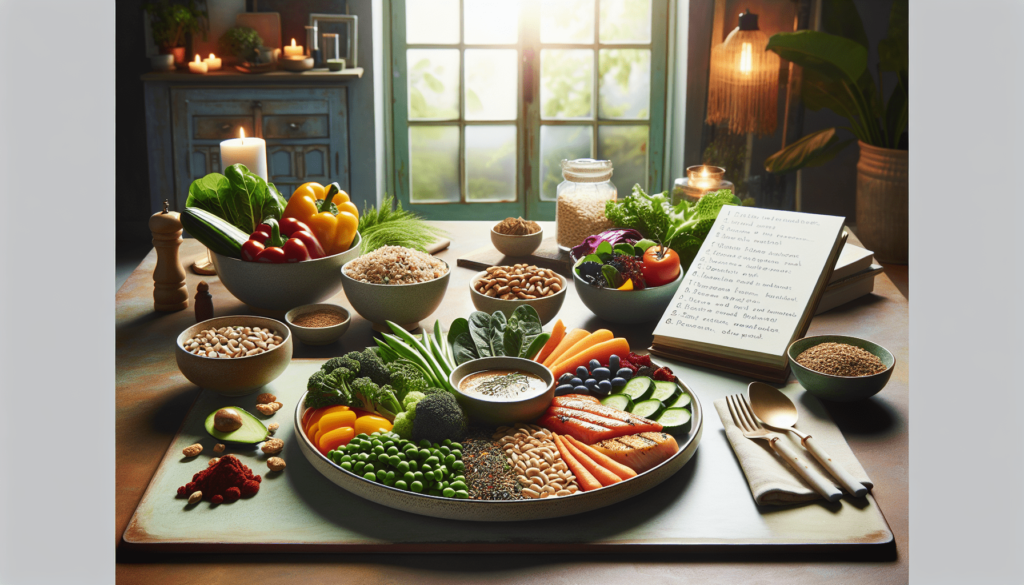
Healthy Eating Habits
Adopting healthy habits can make a significant difference in preventing overeating and promoting overall well-being.
Balanced Diet
A balanced diet ensures you are getting the right nutrients in the proper amounts. This helps keep your body satisfied, reducing the likelihood of overeating.
Components of a Balanced Diet:
- Proteins: Essential for muscle repair and growth.
- Fats: Necessary for hormone production and energy.
- Carbohydrates: Your body’s main energy source.
- Vitamins and Minerals: Important for various bodily functions.
Regular Meals and Snacks
Eating regular meals and snacks prevents extreme hunger and helps you avoid overeating later. Skipping meals can lead to an unhealthy cycle of binging and fasting.
Meal and Snack Tips:
- Don’t Skip Breakfast: It sets the tone for your day and helps control hunger.
- Healthy Snacks: Keep nutritious snacks handy to avoid reaching for junk food.
- Consistent Meal Timing: Aim to eat at regular intervals to stabilize blood sugar levels and manage hunger.
Mindful Grocery Shopping
Your food choices start at the grocery store. By making mindful decisions when shopping, you can shape your home environment to support healthier eating.
Grocery Shopping Tips:
- Shop the Perimeter: Most whole foods like fruits, vegetables, dairy, and meats are found around the perimeter of the store.
- Read Labels: Pay attention to serving sizes and nutritional information.
- Avoid Shopping When Hungry: You’re more likely to make impulsive purchases and opt for unhealthy options.
Sustainable Weight Loss Tips
If part of your goal is weight loss, it’s important to follow a sustainable approach rather than drastic diets that only offer temporary results.
Set Realistic Goals
Setting attainable goals can help maintain motivation and track progress. Unrealistic expectations can lead to disappointment and give up on your efforts.
Goal-Setting Tips:
- Short-Term Goals: Focus on small, achievable milestones.
- Long-Term Goals: Have a clear vision of what you want to achieve in the long run.
- Celebrate Success: Reward yourself for meeting both small and significant goals.
Exercise Regularly
Physical activity complements your dietary efforts by boosting metabolism and aiding in weight management.
Exercise Tips:
- Find What You Enjoy: Engage in activities that you find pleasurable, like dancing, hiking, or cycling.
- Stay Consistent: Regularity is more important than intensity.
- Mix It Up: Incorporate a variety of exercises to keep it interesting and target different muscle groups.
Monitor Your Progress
Keeping track of what you eat and your physical activity can provide valuable insights into your habits and highlight areas for improvement.
Monitoring Tips:
- Food Diary: Write down everything you eat, including portion sizes and emotions linked to eating.
- Fitness Apps: Use tools for tracking physical activity and calorie intake.
- Regular Weigh-Ins: Step on the scale once a week to monitor progress.
Building a Support System
Having a support system can make a significant difference in your journey. Whether it’s friends, family, or a community, sharing your goals with others can offer encouragement and accountability.
Find Your Squad
Surround yourself with individuals who support your goals and encourage healthy habits.
Support System Ideas:
- Join a Group: Look for local or online groups with similar goals.
- Buddy Up: Find a friend who also wants to avoid overeating and motivate each other.
- Professional Help: Consider a nutritionist or dietitian for personalized guidance.
Communicate Your Needs
Being open about your goals and challenges with those around you can foster understanding and support.
Communication Tips:
- Be Honest: Let your loved ones know what you need from them.
- Ask for Support: Whether it’s a workout buddy or someone to share meal planning tips, don’t hesitate to ask.
- Set Boundaries: Make it clear if there are certain foods or habits you’re trying to avoid and request support in sticking to them.
Conclusion
Avoiding overeating is about adopting a mindful and balanced approach towards eating. By understanding the triggers that lead to overeating and implementing practical strategies such as mindful eating, portion control, and meal planning, you can significantly improve your relationship with food. Remember, the journey towards healthier eating is a gradual process, and it’s important to be patient with yourself. Celebrate your successes, learn from your challenges, and enjoy the journey towards a healthier, more balanced lifestyle. You’ve got this!
The post How To Avoid Overeating At Meals appeared first on Akron Weight Loss Programs.
]]>The post How To Handle Social Events While Watching Your Weight appeared first on Akron Weight Loss Programs.
]]>
Learn More About Handling Social Events And Weight Management
Understanding the Challenges
Before we dive into the tips and tricks, it’s important to understand why social events can be particularly challenging when you’re watching your weight. Social gatherings often involve food and drinks that may not align with your weight loss goals. Moreover, there’s the added pressure of social norms and expectations, such as not wanting to offend your host or feeling the need to indulge like everyone else.
The Social Pressure
Let’s face it; social events are a time to relax and enjoy yourself. However, the indulgences that come with these occasions can throw a wrench in your weight management plans. Peer pressure, the desire to fit in, and cultural norms around food can make it harder to stick to your goals.
The Tempting Spread
Whether it’s a family barbecue, a birthday party, or a holiday feast, social events are often synonymous with tempting, calorie-dense foods. From appetizers to desserts, the wide array of options can be overwhelming.
Irregular Eating Schedules
Social events often disrupt your regular eating schedule. You might find yourself eating later than usual or skipping meals in anticipation of a big dinner party, which can lead to overeating.
Preparing Ahead
Preparation is key when it comes to handling social events while watching your weight. Here are some strategies to help you prepare in advance.
Know the Menu
If possible, find out what’s on the menu ahead of time. Most events nowadays, especially more formal ones, will have a set menu that you can inquire about. Knowing what’s available allows you to plan what you will eat and avoid.
Eat Before You Go
This might seem counterintuitive, but eating a small, healthy meal before attending a social event can help you avoid overeating. A balanced snack with protein, healthy fats, and fiber will keep you satiated and less likely to indulge in high-calorie foods.
Bring a Healthy Dish
If it’s a potluck or a casual gathering, offer to bring a healthy dish. This ensures there’s at least one option that aligns with your dietary goals, and it shows others that healthy food can be delicious too.
Set Realistic Expectations
Understand that it’s okay to treat yourself occasionally. Setting unrealistic expectations can lead to guilt and frustration. Allow yourself to enjoy the event by making mindful choices rather than striving for perfection.
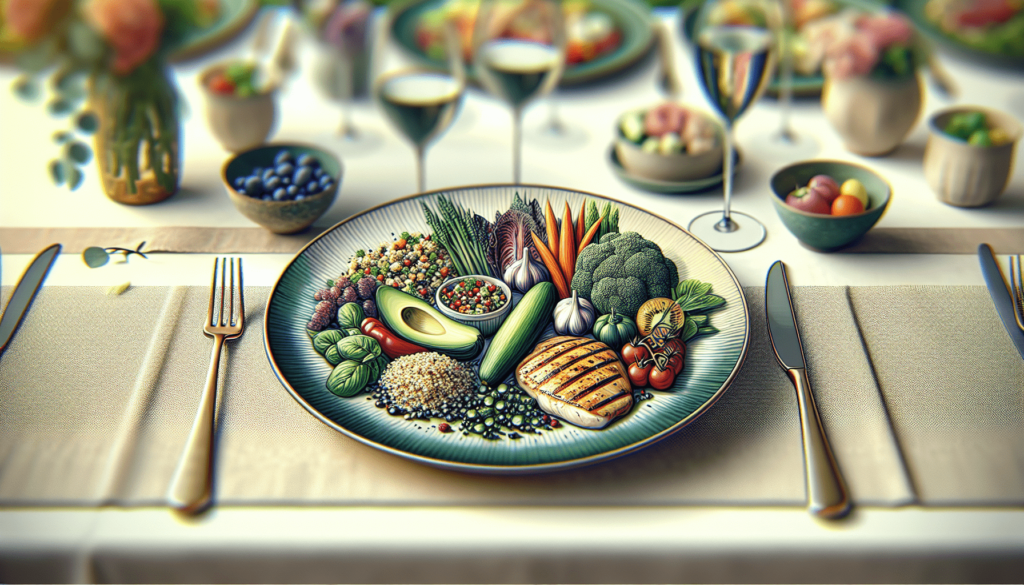
Expert Tips For Managing Weight At Social Gatherings
Navigating the Event
Now that you’re well-prepared, let’s talk about how to navigate the actual event.
Socialize Away from the Food
It’s easy to get caught up in mindless eating when you’re standing or sitting near the food table. Make an effort to socialize in other areas. The further you are from the tempting spread, the less likely you are to indulge unnecessarily.
Practice Mindful Eating
Mindful eating is about paying full attention to the experience of eating and drinking. Savor each bite, chew slowly, and enjoy the flavors. This helps you recognize when you’re full and prevents overeating.
| Strategy | Description |
|---|---|
| Socialize Away | Stay away from the food table to avoid mindless eating. |
| Practice Mindful Eating | Savor each bite and chew slowly to enjoy your food fully. |
Drink Wisely
Alcoholic beverages are often laden with calories and can weaken your resolve. If you choose to drink, do so mindfully. Opt for lighter options like a glass of wine or a spritzer. Also, alternate alcoholic drinks with water to stay hydrated and control your calorie intake.
Plate Management
Use a smaller plate if available and start by filling it with healthier options like vegetables and lean proteins. This simple trick can help control portion sizes and reduces the temptation to pile on high-calorie foods.
Handling Conversations
Navigating conversations about your diet and weight loss efforts can be tricky during social events. Here are some tips for handling these conversations gracefully.
Be Honest but Brief
You don’t owe anyone a detailed explanation of your dietary choices. A simple, “I’m focusing on eating healthier,” is usually enough. Most people will respect your decision and move on.
Deflect and Redirect
If someone is overly persistent or nosy, gently deflect the attention. You might say something like, “I’m just trying something new for my health. How have you been?” This shifts the focus away from you and onto the other person.
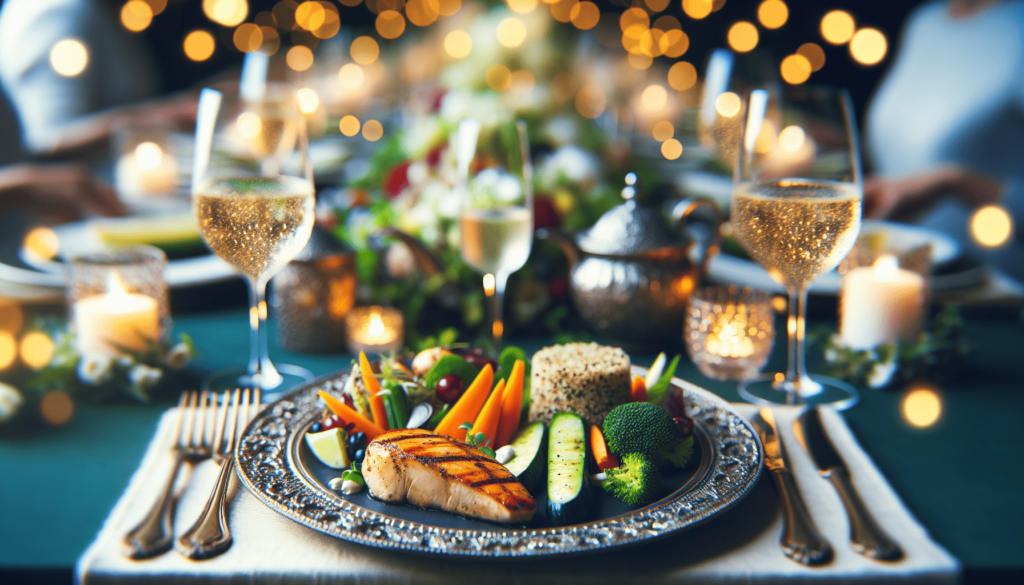
Enjoying Yourself
Remember, social events are supposed to be enjoyable. Here’s how to have a great time without compromising your goals.
Focus on the Fun
Shift your focus from food to the other enjoyable aspects of the event, like socializing, dancing, or playing games. Engaging in activities can help take your mind off food and prevent boredom eating.
Allow Yourself a Treat
It’s okay to enjoy a treat now and then. If there’s a special dish you love, have a small portion and savor it. This can prevent feelings of deprivation and help you maintain a healthy relationship with food.
Post-Event Strategies
What you do after the event is just as important as what you do during. Here are some strategies to keep you on track.
Reflect and Learn
Take some time to reflect on what went well and what could be improved for next time. Did you stick to your plan? Were there moments where you felt challenged? Use these reflections to refine your strategies.
Get Back on Track
Don’t let one event derail your progress. If you indulged more than planned, get back to your healthy routine immediately. There’s no need for guilt—just return to your balanced meals and exercise.
Stay Hydrated
Drinking plenty of water after an event can help flush out excess sodium and reduce water retention. It also helps you feel revitalized and ready to jump back into your healthy habits.
Practical Tips for Specific Types of Events
Different types of social events present unique challenges. Let’s look at some specific situations and how to handle them.
Family Gatherings
Family gatherings often come with traditional dishes and emotional eating triggers. Here are some tips:
- Communicate Your Goals: Let close family members know about your weight loss goals. They are more likely to offer support and even incorporate healthier options.
- Portion Control: Enjoy traditional dishes in moderation. A small portion can satisfy your craving without taking you off track.
- Bring Your Own Dish: Offer to bring a healthy, delicious dish that everyone can enjoy.
Work Functions
Work events can range from casual lunches to formal dinners, often with limited control over the menu.
- Network More: Focus on networking and building relationships rather than the food. Holding a glass of water or a small plate of fruit can keep your hands occupied while you chat.
- Choose Wisely: Opt for salads, lean proteins, and vegetables if you have buffet options. Avoid creamy dressings and fried foods.
- Limit Alcohol: Keep alcoholic beverages to a minimum. This helps maintain your professional demeanor and keeps your calorie count in check.
Holiday Parties
Holiday parties are notorious for indulgent treats and drinks.
- Plan Ahead: If you know a holiday party is coming up, plan your week accordingly. Maybe have lighter meals earlier in the week to balance it out.
- Savor Seasonal Treats: Enjoy treats that are unique to the holiday season, but do so mindfully. It’s fine to have a piece of your favorite pie, just not three pieces.
- Stay Active: Incorporate extra physical activity into your routine during the holiday season. This can help offset any extra calories consumed.
Dining Out
Eating out can be a landmine of dietary traps, but there are ways to navigate the menu successfully.
- Scan the Menu Ahead: Most restaurants post their menus online. Look for healthy options and decide what to order before you arrive.
- Ask for Modifications: Don’t hesitate to ask for dressings on the side, grilled instead of fried, or extra vegetables.
- Share Desserts: If you want to enjoy a dessert, consider sharing it with someone. This gives you a taste without the full calorie load.
Psychological Strategies
It’s also important to address the psychological aspects of navigating social events while watching your weight.
Manage Stress
Social events can sometimes be stressful, leading to emotional eating. Here are some tips to manage stress:
- Practice Mindfulness: Engage in mindfulness exercises like deep breathing or meditation before the event.
- Focus on Relationships: Focus on the joy of being with friends or family rather than the stress factors.
- Have an Exit Plan: If you find yourself feeling overwhelmed, it’s okay to leave early.
Positive Self-Talk
Maintaining a positive mindset can have a significant impact on your ability to stick to your weight loss goals.
- Affirmations: Use positive affirmations to boost your confidence. Statements like “I am in control of my choices” can be very empowering.
- Avoid Guilt Trips: If you slip up, avoid beating yourself up. Acknowledge it, learn from it, and move on.
Strengthen Your Why
Remind yourself why you started your weight loss journey. Keeping your goals at the forefront of your mind can help you make better choices.
Building a Support System
Having a strong support system can make navigating social events significantly easier.
Communicate Your Goals
Share your weight loss goals with close friends and family. They are likely to offer support and encouragement.
Find a Buddy
Having a friend who’s also watching their weight can be a great support system. You can motivate each other and share tips and strategies.
Long-Term Success
Handling social events is not just about short-term strategies; it’s about building sustainable habits.
Consistency is Key
Consistency in your daily habits will automatically make handling social events easier. When healthy eating and regular exercise become your routine, occasional social events won’t have a massive impact.
Celebrate Non-Food Wins
Celebrate your milestones and achievements in ways that don’t involve food. Reward yourself with a new book, a day at the spa, or any non-food treat that brings you joy.
Practice Makes Perfect
The more events you attend while mindful of your goals, the better you’ll get at it. Each event is an opportunity to practice making healthier choices and developing your strategies.
Final Thoughts
Handling social events while watching your weight doesn’t have to be an enormous challenge. With a bit of preparation, mindfulness, and support, you can enjoy social gatherings while staying on track with your weight loss goals. Remember, it’s not about perfection but finding a balance that works for you. Enjoy the company, the conversations, and the moments—because your weight loss journey is all about creating a healthier, happier you.
So go ahead, attend that party, celebrate with friends, and know that you have the tools to handle it well. You’ve got this!
Discover Strategies For Staying Fit During Social Events
The post How To Handle Social Events While Watching Your Weight appeared first on Akron Weight Loss Programs.
]]>The post 10 Low-Calorie Foods That Fill You Up appeared first on Akron Weight Loss Programs.
]]>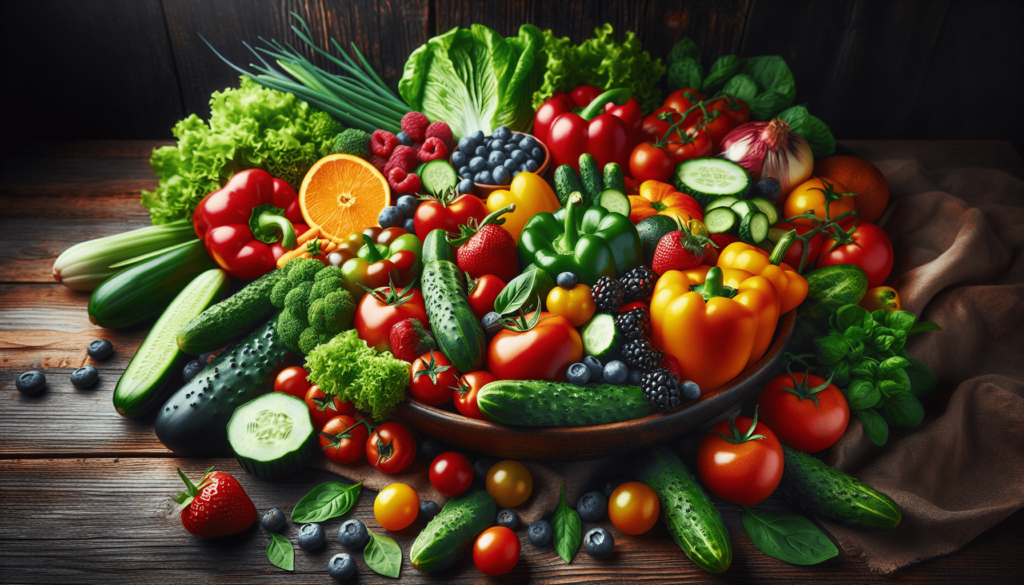
Buy Your Low-Calorie Cookbook Here
1. Leafy Greens
Why Leafy Greens?
Leafy greens like spinach, kale, and lettuce are incredibly low in calories yet packed with nutrients. They are a fantastic addition to any meal due to their volume. By consuming leafy greens, you can eat a lot without exceeding your calorie limit.
Nutritional Benefits
Leafy greens are rich in vitamins A, C, and K, along with folate and fiber. The fiber helps you feel fuller longer, reducing the temptation to snack between meals.
How To Include Them In Your Diet
Think salads, green smoothies, or even adding them to soups and stews. You can sauté them lightly with some olive oil and garlic for a flavorful side dish.
Fun Fact: A cup of spinach has only about 7 calories, while still offering you essential nutrients.
2. Greek Yogurt
Why Greek Yogurt?
Greek yogurt is a creamy, protein-packed snack that can easily become a staple in your diet. It’s thicker than regular yogurt and comes in various flavors, making it a versatile food choice.
Nutritional Benefits
One serving of Greek yogurt can provide you with up to 20 grams of protein, depending on the brand and type. High protein content helps in keeping you full, much longer than low-protein food. Greek yogurt is also a good source of probiotics, which are beneficial for your gut health.
How To Include It In Your Diet
Enjoy it as a stand-alone snack or mix it with fresh fruits and a drizzle of honey for a delicious treat. Greek yogurt can also be used as a base for smoothies or as a substitute for sour cream in recipes.
Hint: Opt for low-fat or fat-free versions to keep the calorie count low.
Get The Full List Of Low-Calorie Foods
3. Legumes and Beans
Why Legumes and Beans?
Beans, lentils, and chickpeas are among the most versatile and nutritious foods you can add to your diet. They are high in fiber and protein, making them very filling.
Nutritional Benefits
Legumes are packed with protein, fiber, and are low in fat. This combination makes them great for satisfying hunger and maintaining stable blood sugar levels.
How To Include Them In Your Diet
Toss them into salads, make a hearty bean soup, or whip up some spicy lentil curry. You can also incorporate legumes into dips like hummus.
Tip: Canned beans are a convenient option but look for low-sodium versions to keep the meal healthy.
4. Oatmeal
Why Oatmeal?
A bowl of oatmeal can be incredibly filling and nutritious, perfect for starting your day on the right foot. It’s an excellent source of complex carbohydrates.
Nutritional Benefits
Oatmeal is high in soluble fiber, particularly beta-glucan, which has been shown to promote a feeling of fullness. It can help in lowering cholesterol and is a good option for those trying to manage their blood sugar levels.
How To Include It In Your Diet
Prepare it with water or milk and top it with fruits, nuts, or a touch of honey. Overnight oats are a convenient option for busy mornings.
Suggestion: Rolled oats or steel-cut oats are better choices compared to instant oatmeal, which often contains added sugars.
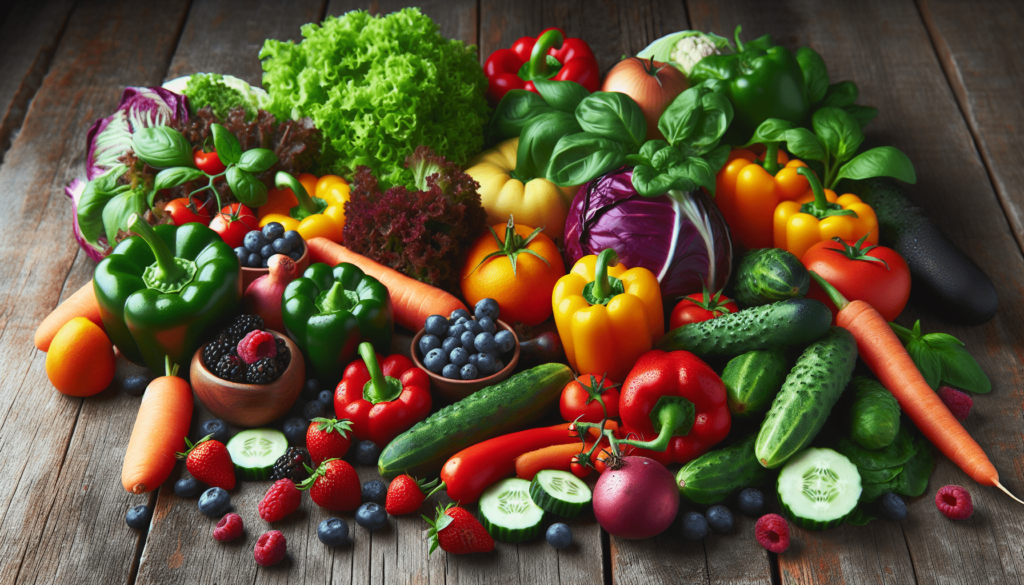
5. Eggs
Why Eggs?
Eggs are one of the most nutritious and versatile foods around. They are low in calories and very high in protein, which can help you feel full for hours.
Nutritional Benefits
A single large egg has around 70 calories and packs about 6 grams of high-quality protein. Eggs also contain several essential nutrients, including vitamins B12, D, and choline.
How To Include Them In Your Diet
Prepare them boiled, scrambled, or poached for a hearty breakfast. Eggs can also be added to salads or turned into an omelet loaded with veggies.
Lesser Known Fact: Eggs are also a source of antioxidants like lutein and zeaxanthin, beneficial for eye health.
6. Popcorn
Why Popcorn?
Believe it or not, popcorn can be a low-calorie, filling snack if prepared correctly. Air-popped popcorn, in particular, is high in fiber and can satisfy your cravings without adding much to your calorie count.
Nutritional Benefits
Popcorn is a whole grain, providing around 4 grams of fiber per 4-cup serving. It’s also low in calories, with approximately 30 calories per cup if air-popped.
How To Include It In Your Diet
For best results, make your own air-popped popcorn and season it lightly with salt, herbs, or nutritional yeast. Avoid adding too much butter or oil to keep it healthy.
Tip: Flavor it with a sprinkle of cinnamon or cayenne pepper for an interesting twist.
7. Cottage Cheese
Why Cottage Cheese?
Cottage cheese is an often overlooked, yet highly nutritious food that can help curb your hunger. It’s rich in protein and very low in calories.
Nutritional Benefits
A single cup of low-fat cottage cheese has around 200 calories and packs a whopping 27 grams of protein. It’s also a good source of calcium and B vitamins.
How To Include It In Your Diet
Enjoy cottage cheese on its own or mix it with fruits for a sweet treat. It can also be used in savory dishes like lasagna or as a spread on whole-grain crackers.
Hint: Cottage cheese can be used as a low-calorie substitute in recipes calling for ricotta or cream cheese.
8. Broth-Based Soups
Why Broth-Based Soups?
Broth-based soups can fill you up without filling you out. They’re generally low in calories but can be packed with vegetables, legumes, or lean meats to make a nutritious meal.
Nutritional Benefits
Due to their high water content, broth-based soups are excellent for promoting a feeling of fullness. They can be very low in calories, especially if you go easy on ingredients like cream and butter.
How To Include Them In Your Diet
Think of veggie-packed minestrone, chicken noodle soup, or classic tomato soup. You can make a big batch and store it for quick meals throughout the week.
Suggestion: Avoid store-bought soups that are high in sodium and opt for homemade versions when possible.
9. Berries
Why Berries?
Berries like strawberries, blueberries, and raspberries are nutrient-dense and can satisfy your sweet tooth while keeping calories low.
Nutritional Benefits
Berries are rich in fiber, vitamins, and antioxidants. They offer a low-calorie option for adding sweetness and nutrients to your diet.
How To Include Them In Your Diet
Add them to your yogurt, oatmeal, or enjoy them as a stand-alone snack. Berries can also be blended into smoothies or used as a topping for salads.
Fun Fact: A cup of strawberries has only around 50 calories but provides a significant amount of vitamin C and fiber.
10. Fish
Why Fish?
Fish, especially varieties like salmon, tuna, and cod, are packed with protein and healthy omega-3 fatty acids.
Nutritional Benefits
Fish is high in protein and relatively low in calories. Omega-3 fatty acids present in fish are excellent for heart health and can aid in reducing inflammation.
How To Include It In Your Diet
You can grill, bake, or steam fish for a nutritious and filling meal. Pair it with some leafy greens or a vegetable stir-fry for a well-rounded dinner.
Tip: Opt for wild-caught fish whenever possible to avoid contaminants often found in farm-raised varieties.
Conclusion
Incorporating these ten low-calorie, filling foods into your diet can help you stay on track with your weight-loss goals without feeling deprived. These nutrient-dense options provide essential vitamins, minerals, and proteins that keep you satisfied and energized.
Here’s a quick recap:
| Food | Key Nutrients | How to Enjoy |
|---|---|---|
| Leafy Greens | Vitamins A, C, K, Fiber | Salads, smoothies, sautés |
| Greek Yogurt | Protein, Probiotics | Stand-alone snack, with fruits |
| Legumes and Beans | Protein, Fiber | Soups, salads, curries |
| Oatmeal | Soluble Fiber | Breakfast bowl, overnight oats |
| Eggs | Protein, Vitamins B12, D | Boiled, scrambled, in salads |
| Popcorn | Fiber | Air-popped, lightly seasoned |
| Cottage Cheese | Protein, Calcium | With fruits, in savory dishes |
| Broth-Based Soups | Hydration, Low-calorie | Veggie soups, minestrone |
| Berries | Fiber, Antioxidants | In yogurt, oatmeal, as snacks |
| Fish | Protein, Omega-3 Fats | Grilled, baked, or steamed |
By making these choices, you can enjoy delicious meals and snacks that won’t sabotage your calorie goals. Here’s to a healthier, more satisfying diet!
Purchase Low-Calorie Meal Plans
The post 10 Low-Calorie Foods That Fill You Up appeared first on Akron Weight Loss Programs.
]]>The post Top Ways To Control Portions For Women’s Weight Loss appeared first on Akron Weight Loss Programs.
]]>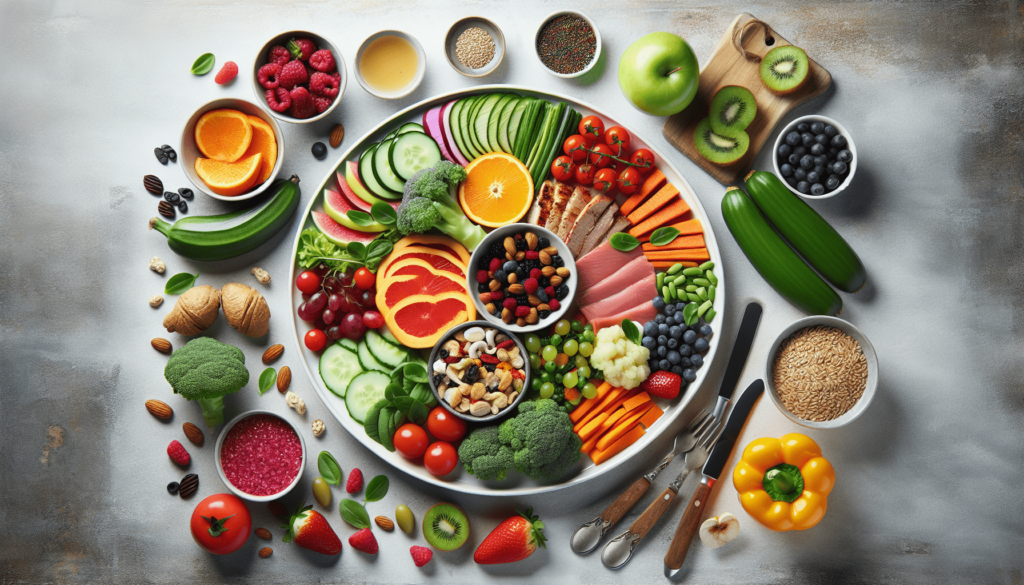
Understanding Portion Control
What Is Portion Control?
Portion control is simply managing the amount of food you eat in one sitting. It’s not about eating tiny portions but rather understanding and balancing the amount of food you consume to maintain a healthy diet.
Why Is It Crucial for Women?
Women often have different nutritional needs compared to men due to factors like hormonal changes, pregnancy, and menopause. Hence, portion control can significantly impact overall health and weight management.
Benefits of Portion Control
Weight Loss
Effective portion control can help you consume fewer calories without feeling deprived. This calorie reduction can lead to weight loss, which is beneficial for your overall health.
Better Digestion
Smaller portions can make it easier for your stomach to digest food. This means less bloating, discomfort, and better nutrient absorption.
Balanced Diet
Portion control allows for a more balanced diet. By being mindful of what and how much you eat, you can ensure you’re getting the right amounts of essential nutrients.
Learn More About Controlling Portions
Tips for Effective Portion Control
Use Smaller Plates
One of the simplest tricks is using smaller plates. This can visually trick your brain into thinking you’re eating more than you actually are, satisfying both your mind and stomach.
| Plate Size | Effect on Consumption |
|---|---|
| Large Plate | Encourages Overeating |
| Small Plate | Helps in Portion Control |
Mindful Eating
Be present while eating. Avoid distractions such as TV or smartphones. Paying attention to your meal can help you recognize when you’re full, preventing overeating.
Measure Portions
Get familiar with measuring cups, spoons, and kitchen scales. Knowing the exact amount you’re eating can make a big difference.
| Food Item | Suggested Portion Size |
|---|---|
| Proteins | 3-4 oz (about the size of a deck of cards) |
| Carbohydrates | 1/2 cup (cooked) or one cupped hand |
| Fats | 1 tablespoon (about the size of your thumb) |
Strategies to Avoid Overeating
Pre-portion Your Meals
Instead of digging straight into a big bag of chips, portion out a serving into a small bowl. This can help you avoid mindlessly eating the entire bag.
Eat Regularly
Skipping meals can lead to extreme hunger and overeating later. Aim for balanced meals throughout the day to keep your hunger levels consistent.
Hydrate Adequately
Sometimes, thirst can be mistaken for hunger. Drink plenty of water to keep your body hydrated and to prevent unnecessary snacking.
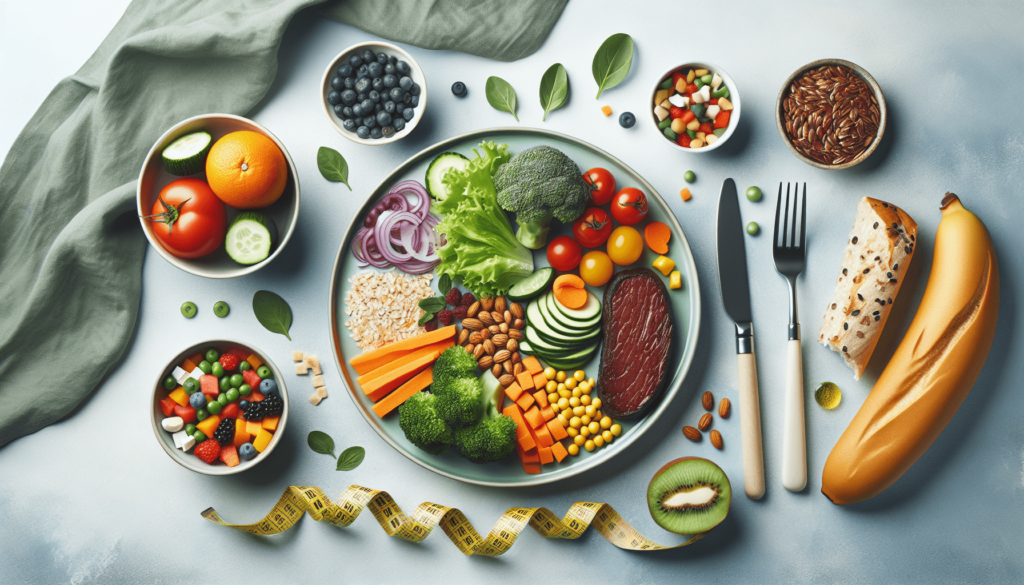
Mindful Grocery Shopping
Make a Shopping List
Plan your meals and snacks ahead of time, and stick to your shopping list. This can help you avoid impulse buys that can sabotage your portion control efforts.
Read Nutrition Labels
Understanding what’s in your food can help you make better portion decisions. Pay attention to serving sizes and nutritional information.
Shop the Perimeter
The perimeter of most grocery stores usually contains fresh produce, lean meats, and dairy—foods that are generally healthier and easier to portion properly.
Portion Control and Dining Out
Share Your Meal
Restaurant portions are often larger than what you’d serve at home. Consider sharing a dish with a friend or asking for a to-go box right away to save half for later.
Choose Wisely
Opt for dishes with plenty of vegetables, lean proteins, and whole grains. These are generally lower in calories and more filling, helping you stick to your portion control goals.
Watch Your Alcohol Intake
Alcohol not only adds extra calories but can also lower your inhibitions, leading to overeating. Be mindful of how much you drink, and try to stick to one or two glasses.
Portion Control and Emotional Eating
Identify Triggers
Understanding what triggers your emotional eating can help you manage it better. Stress, boredom, and even happiness can drive you to eat more than you need.
Find Alternatives
Instead of turning to food, find other ways to cope with your emotions. This could be a walk, a chat with a friend, or a hobby you enjoy.
Keep a Food Diary
Writing down what you eat and how you feel can help you identify patterns in your eating habits and make it easier to implement changes.
Creating Balanced Meals
Incorporate All Food Groups
Ensure your meals include a balance of proteins, carbohydrates, and fats. Each food group plays a role in keeping your body healthy and satisfied.
Use the Plate Method
Divide your plate into sections: half for vegetables and fruits, a quarter for proteins, and a quarter for carbohydrates. This visual aid can help you ensure balanced portions.
Don’t Forget Fiber
Fiber-rich foods like fruits, vegetables, and whole grains can help you feel fuller for longer, making it easier to control portions.
Long-term Portion Control Strategies
Plan Your Meals
Meal planning can take the guesswork out of portion control. Knowing exactly what and how much you’re going to eat can help you stick to your goals.
Stay Consistent
Consistency is key to making any change sustainable. Stick with your portion control habits even when you’re dining out or during holidays.
Seek Professional Help
If you’re struggling with portion control, consider consulting a dietitian or nutritionist. They can provide personalized guidance and support.
Common Portion Control Mistakes
Mistaking Portion Size for Serving Size
The portion you serve yourself may not match the recommended serving size on food labels. Make sure to check and adjust accordingly.
Drinking Calories
Beverages like soda, juice, and even coffee with cream can add up in calories. Be mindful of what you drink and consider healthier alternatives like water or herbal tea.
Ignoring Snacks
Snacks can be a significant source of extra calories. Portion out your snacks just as you would your meals to avoid overeating.
Conclusion
Controlling portions is a powerful tool for women’s weight loss. It not only helps in shedding those extra pounds but also promotes better digestion, a balanced diet, and overall well-being. By incorporating these friendly and practical tips, you’ll be well on your way to a healthier, happier you. So go ahead, take control of your portions, and enjoy the journey to better health!
Effective Portion Control Strategies
The post Top Ways To Control Portions For Women’s Weight Loss appeared first on Akron Weight Loss Programs.
]]>The post How To Meal Prep For Weight Loss As A Woman appeared first on Akron Weight Loss Programs.
]]>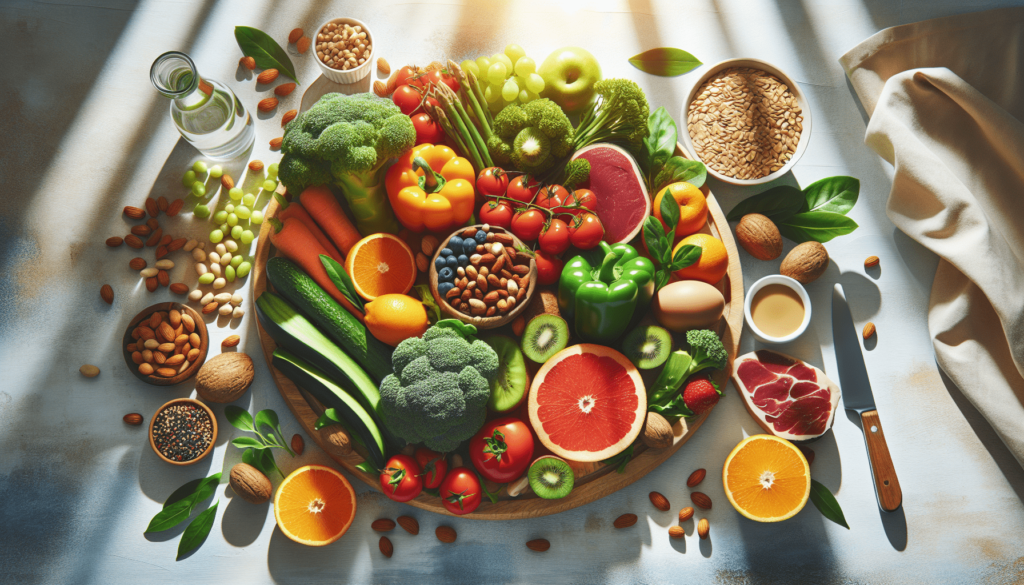
Understanding Weight Loss for Women
Why Weight Loss Varies for Women
Weight loss isn’t a one-size-fits-all journey, especially when it comes to women. Hormonal fluctuations, menstrual cycles, and different metabolic rates make women’s weight loss unique. Understanding these factors can help tailor your meal prep strategy to be more effective.
Before diving into meal prepping tips and strategies, it’s essential to understand why weight loss might be more challenging for women compared to men. Here are a few key reasons:
- Hormonal fluctuations: Women experience monthly hormonal changes that can influence appetite, water retention, and mood, all of which can impact eating habits.
- Lower muscle mass: On average, women have less muscle mass than men, which can result in a slightly slower metabolism.
- Reproductive factors: Pregnancy, childbirth, and menopause can all cause significant changes in weight and body composition.
By acknowledging these factors, you can create meal plans that cater specifically to your needs and optimize your weight loss efforts.
How To Start Meal Prepping for Weight Loss
Set Clear Goals
Before you start cooking, it’s crucial to set clear and achievable goals. Are you aiming to lose a specific amount of weight, or do you want to maintain your current weight while eating healthier foods? Having a clear goal will help you stay focused and motivated.
Choose the Right Recipes
Not all recipes are created equal, especially when it comes to weight loss. Here are some things to consider when choosing recipes:
- Nutrient Density: Opt for meals rich in nutrients but low in empty calories. Think lean proteins, whole grains, and plenty of vegetables.
- Caloric Intake: Be mindful of the calories in each meal. Using a food diary or an app can help you track your daily caloric intake effortlessly.
- Ease of Preparation: The easier the recipes, the more likely you’ll stick to your meal prep routine.
Plan Your Meals Ahead
Planning is the cornerstone of successful meal prepping. Set aside some time each week to plan your meals for the upcoming days. This can be as simple as writing down your meal plan in a notebook or using a digital planner.
Here’s a simple table to help you visualize your weekly meal plan:
| Day | Breakfast | Lunch | Dinner | Snacks |
|---|---|---|---|---|
| Monday | Greek yogurt with nuts | Grilled chicken salad | Quinoa with veggies | Apple slices with peanut butter |
| Tuesday | Oatmeal with berries | Tuna wrap with spinach | Baked salmon with asparagus | Carrot sticks with hummus |
| Wednesday | Smoothie with protein | Turkey and avocado sandwich | Stir-fried tofu with broccoli | Greek yogurt with honey |
| Thursday | Scrambled eggs | Lentil soup with whole grain bread | Grilled shrimp with quinoa | Mixed nuts |
| Friday | Cottage cheese with fruits | Chicken and veggie stir-fry | Spaghetti squash with marinara | Celery sticks with almond butter |
| Saturday | Whole grain toast with avocado | Spinach and feta salad | Baked cod with mixed veggies | Berries and dark chocolate |
| Sunday | Protein pancakes | Grilled veggie wrap | Beef and broccoli stir-fry | Banana with yogurt |
Grocery Shopping for Meal Prep
Once your meal plan is set, the next step is to make a comprehensive grocery list. Stick to your list when shopping to avoid impulsive buys that could derail your weight loss goals.
Here’s a basic grocery list based on the meal plan above:
- Protein: Greek yogurt, chicken breast, turkey, tuna, salmon, tofu, shrimp, eggs, cottage cheese, cod, beef.
- Whole Grains: Oatmeal, whole grain bread, quinoa, whole grain wraps.
- Fruits and Vegetables: Apples, berries, spinach, avocado, asparagus, broccoli, carrots, mixed veggies, bananas.
- Snacks: Nuts, peanut butter, hummus, honey, dark chocolate, almond butter.
- Other Essentials: Olive oil, spices (salt, pepper, garlic powder, etc.), marinara sauce.
Meal Prep Containers and Tools
Investing in quality meal prep containers can make all the difference. Choose containers that are microwave-safe, freezer-friendly, and leak-proof. Besides containers, having the right kitchen tools like sharp knives, cutting boards, and blenders can streamline your meal prepping process.
Meal Prep Strategies for Weight Loss
Batch Cooking
One of the most efficient ways to meal prep is through batch cooking. Prepare large quantities of a particular dish and portion it out into containers. This method saves you time and ensures you have ready-to-eat meals throughout the week.
Portion Control
Portion control is crucial when it comes to weight loss. Measuring your food can help you avoid overeating. Use measuring cups or a food scale to ensure your portions align with your caloric goals.
Balancing Macronutrients
A balanced diet is essential for weight loss. Aim for a good mix of proteins, carbs, and fats in each meal. This can help keep you full longer and provide the energy you need throughout the day.
Incorporate Variety
Eating the same meals every day can become monotonous and may lead to cravings for unhealthy foods. Incorporate a variety of ingredients and recipes to keep your meals exciting and satisfying.
Freezing and Storing Meals
Freezing meals can be a lifesaver for those busy days when you don’t have time to cook. Ensure you label each container with the name of the dish and the date it was prepared. This makes it easy to keep track of your meals and maintain their freshness.
Delicious and Nutritious Meal Prep Recipes
Breakfast: Overnight Oats
Overnight oats are a fantastic option for a quick and healthy breakfast. They’re easy to prepare, customizable, and can be made in large batches.
Ingredients:
- 1 cup rolled oats
- 1 cup almond milk
- 1 tablespoon chia seeds
- 1 tablespoon honey
- Berries (optional)
Instructions:
- Combine oats, almond milk, chia seeds, and honey in a jar or container.
- Stir well and refrigerate overnight.
- In the morning, add berries or your favorite toppings and enjoy!
Lunch: Grilled Chicken and Quinoa Salad
A grilled chicken and quinoa salad is a protein-packed, nutrient-dense option perfect for lunch.
Ingredients:
- 2 cups cooked quinoa
- 2 chicken breasts
- 1 cucumber, chopped
- 1 bell pepper, chopped
- 1 cup cherry tomatoes, halved
- 1 avocado, sliced
- Olive oil, salt, and pepper for seasoning
Instructions:
- Season chicken breasts with olive oil, salt, and pepper. Grill until fully cooked.
- Let the chicken rest, then slice it into strips.
- In a large bowl, combine cooked quinoa, cucumber, bell pepper, and cherry tomatoes.
- Top with sliced avocado and grilled chicken.
Dinner: Baked Cod with Mixed Vegetables
A simple and satisfying dinner, baked cod with mixed vegetables is low in calories and high in flavor.
Ingredients:
- 2 cod fillets
- 1 cup broccoli florets
- 1 cup carrot sticks
- 1 cup bell pepper slices
- Juice of one lemon
- Olive oil, salt, and pepper for seasoning
Instructions:
- Preheat your oven to 375°F (190°C).
- Place cod fillets on a baking sheet and season with olive oil, lemon juice, salt, and pepper.
- Arrange the vegetables around the fillets, tossing them in olive oil, salt, and pepper.
- Bake for 20-25 minutes or until the cod flakes easily and vegetables are tender.
Snack: Greek Yogurt with Honey and Nuts
Simple yet satisfying, Greek yogurt with honey and nuts can be quickly prepared and offers a balanced mix of protein and healthy fats.
Ingredients:
- 1 cup Greek yogurt
- 1 tablespoon honey
- A handful of nuts (almonds, walnuts, or your favorite mix)
Instructions:
- Scoop the Greek yogurt into a bowl.
- Drizzle with honey.
- Sprinkle with nuts and enjoy!
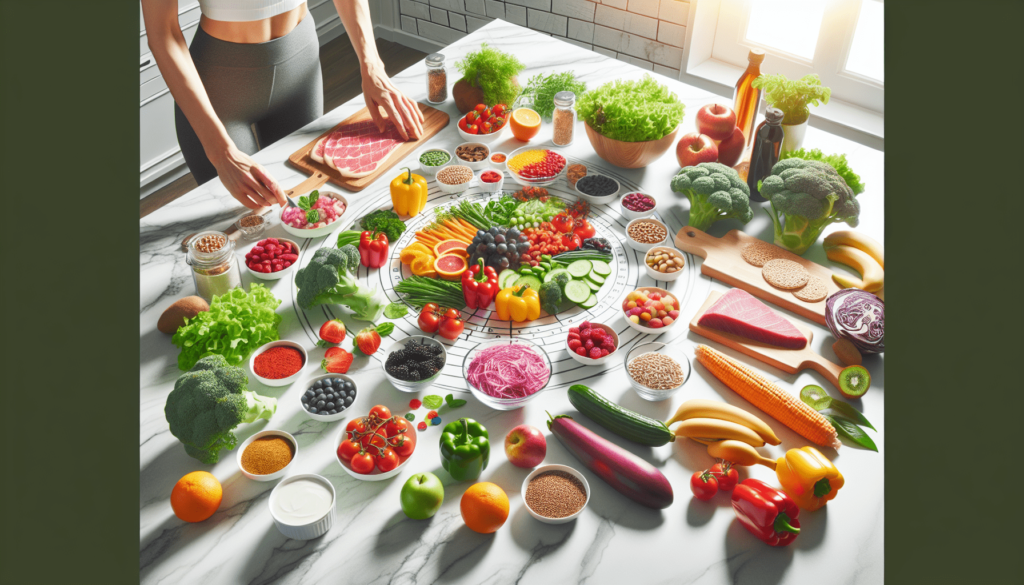
Tips to Keep Momentum in Your Meal Prep Journey
Schedule Your Meal Prep Day
Consistency is key in meal prepping. Choose a specific day each week dedicated solely to meal prepping. Blocking out that time can help you stay committed and make the process smoother.
Keep It Simple
Don’t overwhelm yourself with complicated recipes that require numerous ingredients and hours to make. Stick to simple yet nutritious recipes that you can quickly prepare.
Use a Meal Prep App
Take advantage of technology by using meal prep apps that can help you plan, shop, and track your meals. Apps like MyFitnessPal, MealPrepPro, and Paprika are great resources.
Stay Flexible
Life happens, and sometimes you may not be able to stick to your meal prep plan 100%. That’s okay! Be flexible and have some backup meals in your freezer or pantry for those emergency days.
Involve Family or Friends
Getting others involved can make meal prep more enjoyable. Whether it’s a fun activity with your family or a productive hangout with friends, involving others can keep you motivated.
Overcoming Common Meal Prep Challenges
Time Constraints
One of the biggest hurdles in meal prepping is finding the time. Try to incorporate meal prepping into your weekly routine, just as you would with an important appointment.
Lack of Cooking Skills
Not everyone is a master chef, and that’s perfectly okay. Start with simple recipes and gradually work your way up. There are countless resources online, including video tutorials, to help you along the way.
Food Boredom
Eating the same meals repeatedly can be tiresome. Spice things up by trying new recipes, incorporating seasonal ingredients, and experimenting with different cuisines.
Staying Consistent
Maintaining consistency can be challenging, especially when life gets busy. Keep your end goal in mind and remind yourself of the benefits. Setting reminders and having a support system can also make a huge difference.
Benefits of Meal Prepping for Weight Loss
Saves Time
Meal prepping can save you a significant amount of time during the week, freeing you up to focus on other important tasks or simply relax.
Reduces Stress
Knowing that you have healthy, ready-to-eat meals available can reduce the stress of figuring out what to eat each day.
Supports Weight Loss Goals
By controlling your portions and knowing exactly what’s in your meals, you are better able to stick to your weight loss plan.
Promotes Healthy Eating
Having prepped meals on hand makes it easier to make healthy eating choices consistently, which can improve your overall health.
Saves Money
Meal prepping can also be a more economical choice, as it allows you to buy ingredients in bulk and reduces the temptation to splurge on takeout or dining out.
Conclusion
Meal prepping is a powerful tool that can help you achieve your weight loss goals while making your life significantly easier. From setting clear goals to choosing the right recipes and investing in quality containers, every step you take towards meal prepping is a step towards a healthier you. Remember, consistency is key, and it’s perfectly okay to make adjustments along the way. Whether you’re a busy professional, a stay-at-home mom, or someone just looking to eat healthier, meal prepping can fit seamlessly into your lifestyle. So why not start today? Here’s to a more organized, healthier, and happier you!
Get Your Weight Loss Meal Plan
The post How To Meal Prep For Weight Loss As A Woman appeared first on Akron Weight Loss Programs.
]]>The post Best Low Calorie Snacks For Men On A Weight Loss Diet appeared first on Akron Weight Loss Programs.
]]>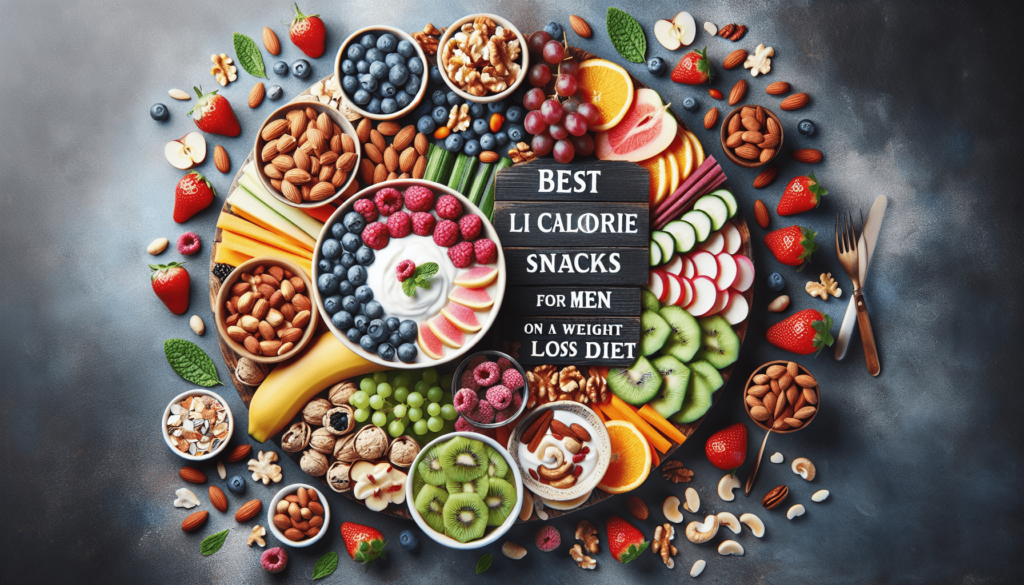
Best Low Calorie Snacks For Men On A Weight Loss Diet
When it comes to losing weight, there’s a common misunderstanding that you need to give up snacking altogether. However, the right snacks can actually support your weight loss goals by curbing hunger and preventing overeating during meals. Let’s dive into some of the best low-calorie snacks specifically beneficial for men on a weight loss journey.
The Importance of Snacking for Weight Loss
You might be wondering why snacking is even important if you’re trying to cut calories. Having nutritious snacks can:
- Control Hunger: They help prevent overeating at your next meal.
- Boost Metabolism: Eating small, frequent meals can keep your metabolism active.
- Provide Energy: They offer an energy boost, especially if you’re working out.
What Makes a Good Low-Calorie Snack?
A good low-calorie snack should be:
- Nutrient-Dense: Packed with vitamins, minerals, and fiber.
- High in Protein: Protein helps you feel fuller longer and aids muscle repair.
- Low in Added Sugars and Fats: While fats are essential, it’s crucial to focus on healthy fats.
Snack selection doesn’t have to be complicated. Here’s a curated list of snacks that check all these boxes:
1. Greek Yogurt
Greek yogurt is a powerhouse snack. It’s higher in protein compared to regular yogurt, making it ideal for staying full. Plus, it contains probiotics, which are great for gut health.
How to Enjoy Greek Yogurt:
- With Berries: Add a handful of berries for antioxidants and fiber.
- With a Drizzle of Honey: A small amount of honey can sweeten it without adding too many extra calories.
- As a Smoothie: Blend with fruits for a quick, nutritious smoothie.
Nutritional Information (Per 100g):
| Nutrient | Amount |
|---|---|
| Calories | 59 |
| Protein | 10g |
| Carbs | 3.6g |
| Fat | 0.4g |
2. Fresh Fruits
Fruits are naturally low in calories and high in essential vitamins, minerals, and fiber. They can satisfy your sweet tooth without added sugars.
Best Fruits for Weight Loss:
- Apples: Packed with fiber, which helps you stay full.
- Bananas: Provide a good dose of potassium.
- Berries: High in antioxidants and low in calories.
Nutritional Information (Example: Apple, Per Medium Apple):
| Nutrient | Amount |
|---|---|
| Calories | 95 |
| Protein | 0.5g |
| Carbs | 25g |
| Fiber | 4.4g |
Get Best Snacks For Weight Loss
3. Raw Vegetables
Raw vegetables are extremely low in calories and offer plenty of fiber, which helps in weight loss by keeping you full.
Best Vegetables for Snacking:
- Carrots: Crunchy and sweet, perfect for dipping.
- Cucumbers: Refreshing and hydrating.
- Bell Peppers: Sweet and rich in vitamin C.
Healthy Dips for Vegetables:
- Hummus: Provides protein and fiber.
- Greek Yogurt Dip: Mix Greek yogurt with herbs for a low-cal dip.
- Salsa: Low in calories and adds a kick of flavor.
Nutritional Information (Example: Carrot, Per 100g):
| Nutrient | Amount |
|---|---|
| Calories | 41 |
| Protein | 0.9g |
| Carbs | 10g |
| Fiber | 2.8g |
4. Nuts and Seeds
While nuts and seeds are calorically dense, they are also rich in healthy fats, protein, and fiber which can help in controlling hunger. The key is portion control.
Best Nuts and Seeds for Weight Loss:
- Almonds: High in protein and good fats.
- Chia Seeds: Packed with omega-3 fatty acids.
- Pumpkin Seeds: Rich in magnesium and zinc.
Recommended Serving Size:
- About a small handful or 1oz to keep the calories controlled.
Nutritional Information (Example: Almonds, Per 1oz):
| Nutrient | Amount |
|---|---|
| Calories | 160 |
| Protein | 6g |
| Fat | 14g |
| Fiber | 3.5g |
5. Hard-Boiled Eggs
Eggs are an excellent source of lean protein and healthy fats. Having a couple of hard-boiled eggs is a quick and convenient snack.
Benefits of Eggs:
- Protein-Rich: Keeps you satiated longer.
- Nutrient-Dense: Contains vitamins A, D, E, and B12.
Nutritional Information (Per Large Egg):
| Nutrient | Amount |
|---|---|
| Calories | 78 |
| Protein | 6g |
| Fat | 5g |
| Carbs | 0.6g |
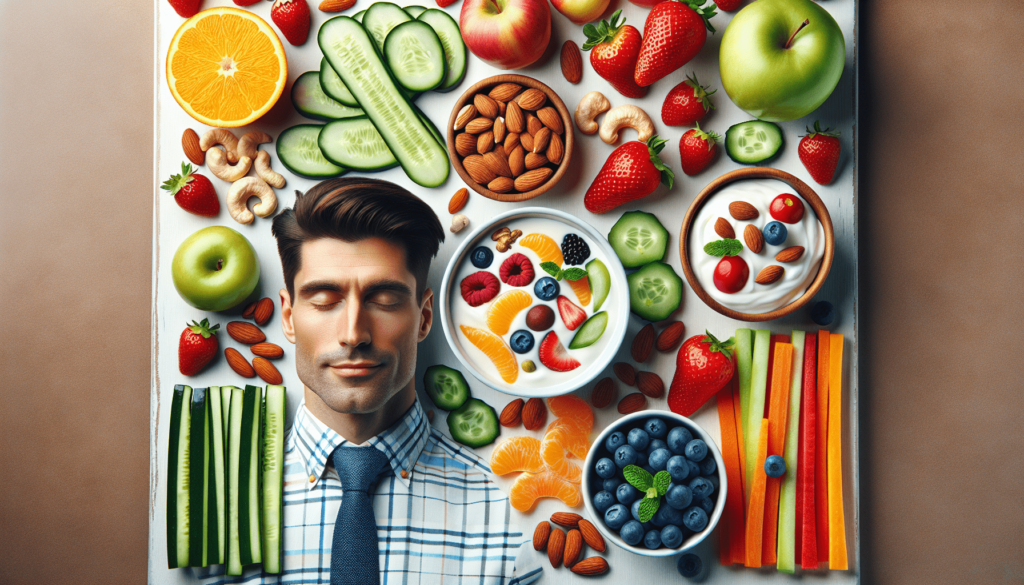
6. Cottage Cheese
Cottage cheese is another excellent source of protein that’s low in calories. It’s versatile and can be paired with both sweet and savory items.
How to Enjoy Cottage Cheese:
- With Fruits: Add fruits like pineapple or peaches.
- With Veggies: Mix with sliced avocado and tomatoes.
- As a Spread: Use it on whole-grain crackers.
Nutritional Information (Per 100g):
| Nutrient | Amount |
|---|---|
| Calories | 98 |
| Protein | 11g |
| Fat | 4.3g |
| Carbs | 3.4g |
7. Rice Cakes
Rice cakes are low in calories and make a perfect base for various toppings. They’re light, crunchy, and very versatile.
Healthy Toppings for Rice Cakes:
- Avocado: Add slices for healthy fats.
- Nut Butter: Spread a thin layer of almond or peanut butter.
- Lean Turkey: Top with a slice of turkey for additional protein.
Nutritional Information (Per Cake, Plain):
| Nutrient | Amount |
|---|---|
| Calories | 35 |
| Protein | 0.7g |
| Carbs | 7.3g |
| Fat | 0.3g |
8. Popcorn
Popcorn can be a great low-calorie snack if you prepare it properly. Air-popped popcorn is much healthier compared to versions that are soaked in butter or oil.
Benefits of Popcorn:
- High in Fiber: Provides good satiety.
- Low in Calories: If air-popped, it’s very low in calories.
Nutritional Information (Per 1 Cup, Air-Popped):
| Nutrient | Amount |
|---|---|
| Calories | 31 |
| Protein | 1g |
| Carbs | 6g |
| Fiber | 1.2g |
9. Edamame
Edamame is young soybeans and they are an excellent source of plant-based protein. They’re not only nutritious but also fun to eat!
How to Enjoy Edamame:
- Steamed: Simply steam and sprinkle with a little sea salt.
- Spiced: Toss with spices like garlic powder and chili flakes.
Nutritional Information (Per 100g):
| Nutrient | Amount |
|---|---|
| Calories | 121 |
| Protein | 11g |
| Carbs | 9g |
| Fiber | 5g |
10. Tuna Salad
Tuna is rich in protein and omega-3 fatty acids, making it a very nutritious snack. The key is to prepare it in a healthy way.
Healthy Tuna Salad Recipe:
- Ingredients: Canned tuna (in water), Greek yogurt, Dijon mustard, diced celery, and a squeeze of lemon.
- Instructions: Mix all the ingredients together and enjoy with whole grain crackers or wrapped in lettuce leaves.
Nutritional Information (Per 100g of Canned Tuna):
| Nutrient | Amount |
|---|---|
| Calories | 70 |
| Protein | 16g |
| Fat | 0.6g |
| Carbs | 0g |
Tips for Healthy Snacking
Understanding what makes a snack healthy and low in calories is half the battle. Here are some tips to keep in mind:
- Portion Control: Even healthy snacks can add up if you eat too much.
- Plan Ahead: Keep healthy snacks on hand so you’re not tempted by high-calorie options.
- Read Labels: Check for hidden sugars and unhealthy fats.
- Stay Hydrated: Sometimes thirst is mistaken for hunger. Drink water before reaching for a snack.
Incorporating Snacks Into Your Diet Plan
When integrated carefully, snacks can enhance your weight loss plan. Consider the following strategies:
Timing
- Mid-Morning: A snack between breakfast and lunch can help manage hunger.
- Afternoon: A snack in the afternoon can prevent overeating at dinner.
Balance
Balance your snacks with a combination of protein, fat, and carbs to maintain steady energy levels.
Activity Level
If you’re more active, you might need snacks that are slightly higher in calories but still healthy to keep your energy up.
Summary
Finding the best low-calorie snacks can be a game-changer for men on a weight loss diet. This list provides a variety of nutritious options that cater to different cravings, whether you’re in the mood for something sweet, savory, or crunchy. Remember, the key is to choose snacks that are nutrient-dense, protein-rich, and low in added sugars and unhealthy fats.
Now that you’re armed with this knowledge, you can master your snack game and stay on track with your weight loss goals. Happy snacking!
Shop Low Calorie Snacks For Men
The post Best Low Calorie Snacks For Men On A Weight Loss Diet appeared first on Akron Weight Loss Programs.
]]>